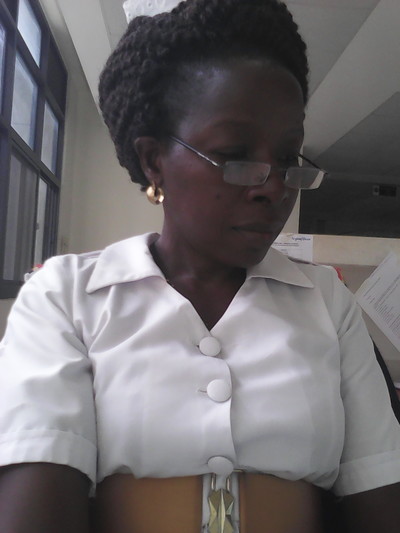
Blog: Training Scholarships: Esther’s Story
![]() Cairdeas
Cairdeas
![]() 1st November 2019
1st November 2019
Esther Nantongo Muyinga, is a Registered Nurse who was sponsored by Cairdeas to pursue a degree in palliative care at Makere University in Uganda. Esther had worked for many years on the wards but had never considered the need for patients to be cared for in a holistic way. In this blog, Esther shares what she learned from the course and how important palliative care is to the patients she cares for.
I am so grateful to Cairdeas Trustees and Supporters for the scholarship which was gifted to me in my first year pursuing a Bachelor of Science in Palliative Care at the Institute of Hospice and Palliative Care in Africa. The course has helped me to understand the role of palliative care in improving the quality of life of patients with life threatening illness and their families.
Through the course I gained knowledge and skills which enabled me to assess and assess, diagnose and manage the pain and symptoms of patients. I learned to communicate effectively when sharing information with patients and their families, gained an understanding of the different medications that can be used to address symptoms, and also shared with my workmates the assessment and management of these patients so as to improve their quality of life.
There is a difference between palliative care and curative care. Although both involve caring for a patient, palliative care takes a much more holistic view of this care. It involves the family and support networks of patients and requires communication skills to share information with patients and their families whether that is good or bad situation. It also involves assessing the pain of a patient. Following the course, I am now able to take a comprehensive pain history and record the details in the patient’s pain assessment chart.
As a result of this course, I have seen reduced stay of patients on the hospital wards after thorough assessment, as those who can benefit from the Home Based Care (HBC) are discharged and linked to HBC providers. The number of admissions has been reduced, because the patients have understood their diagnosis and management, and they understand when to come to the hospital and when to go to palliative care centers (Hospice).
Palliative care practice reduces the workload in the hospitals, saving money, time and resources.
A story of a patient that Esther has cared for...
Patient X was a 32-year-old female, married with two children. She had been unwell for 8 months with a complaint of right abdomen pain, which was treated as peptic ulcer disease (PUD) but with no relief. This later developed progressive abdominal distension associated with reduced appetite, weight loss and dyspepsia proceeding abdominal pain.
In October 2018, Laparotomy and Oophorectomy was done and a biopsy taken off. Histology results showed Krukenburg tumor. Following the results, she was initiated on chemotherapy in November 2018 and received seven (7) cycles with poor response. The tumors continued growing bigger and she became weaker and developed ascites. Because of poor response, chemotherapy was deferred. Frequent paracentesis was done and also pleurocentesis done once. At first the primary care team thought that the primary was the ovary, but then later it was discovered that the primary was the pancreas.
Patient X is employed by a law firm as an office messenger but she has not been working for 6 months now, and is worried of losing her job. She is cared for by her mother who is a tailor by profession, though because of the added responsibility is also no longer working. Her husband is a self-employed IT worker. X complains that when her husband visits her in the hospital he spends most of his time on the computer rather than talking and caring for her.
When I visited patient X she looked a young lady, very sick with mouth sores and a distended abdomen. I was able to offer various medication to help treat her symptoms, including oral gel to relieve the mouth sores. I advised her carer to give patient X the type of food she would like but in small quantities and to avoid fried foods and sweetened and citrus based drinks. The patient, the mother and the husband were given clear explanations about the diagnosis and management, and the husband was told of the importance of his availability and care to the patient.
We were able to discuss the financial burden with the patient and her family and linked them to the social worker for further support. She received continuous support through counselling. I was also able to pray with the patient and linked her with a spiritual leader for further spiritual support.
Patients with life limiting illness have to face difficulties that go beyond the physical symptoms of their illness. Through my course I now understand how, as a nurse, I can help to relieve these stressors and manage the pain and symptoms of a patients - physical, psychosocial and spiritual.
If you would like to support more scholarships like Ivan's, donate to our 2019 Christmas Appeal by visiting www.cairdeas.org.uk/get-involved/donate and selecting 'training scholarships' from the dropdown list.

Esther Nantongo Muyinga recently completed a degree in palliative care with the support of Cairdeas.
